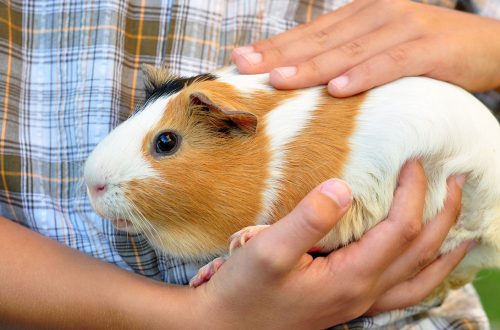
Where do hamsters live in the wild: habitat and enemies of the rodent

Before the first acquaintance with hamsters, people often underestimate them, considering them beautiful and harmless toys that can only survive in protected conditions. But having learned where the hamster lives, you can experience considerable surprise – in the wild they successfully compete with other inhabitants of the range. Small rodents survive in harsh conditions, and to better understand their needs, it is worthwhile to carefully study their lifestyle.
Contents
Where does the hamster live
In which natural area a hamster lives depends on its belonging to a particular species. They can be found in most of the territories of the Russian Federation, China, in most European countries and even in countries with a desert climate – Syria and Iran. An attentive traveler can easily find them in the suburbs, squares and fields.
Steppe
They are also called ordinary. They are noticeably different from the closest relatives that can be found in pet stores. Peculiarities:
- males demonstrate aggressive behavior towards their own kind, they also often attack larger animals;
- nocturnal lifestyle. Burrows can go underground to a depth of 8 meters, at night they leave them in search of food, avoiding the attention of most predators;
- cleanliness. Hamster burrows are divided into several chambers – for sleeping, storing food, and defecation.
Males live with several females, sometimes rodents settle in small colonies, creating large burrows.

Forest
They are found in the forest belt, but are rarely seen. Representatives of this group prefer well-protected areas in the forests of both Americas, Europe and Asia. Such hamsters do not have a clear lifestyle – males and females can live both separately and together. If they settle near human habitation, they go out on a night “hunt”, making their way into the pantries. Such hamsters live in trees, hiding their homes with dried twigs.
Video: forest hamster
Field
The natural habitat is a swampy area. Such hamsters carefully avoid such places. They have a scaly tail and an appearance that makes them confused with common vole mice. The maximum length is 20 centimeters, they equip their dwelling in reed thickets or fasten the stems of plants.

wild representatives
Modern science knows 19 species representing the hamster family. Only on the territory of the Russian Federation there are 12 species, divided into six genera:
- real;
- Medium;
- Gray;
- Upland;
- Rat-like;
- Eversmann.
Each of them has unique external features, thanks to which they can be classified. The largest of them reach a length of 34 centimeters. Some of them are found in Russia:
- Real. Weight about 500 grams, yellow-brown in color, pronounced white markings are visible on the sides, small ears, paws shaped like human hands;
- Upright. They weigh no more than 30 g, have a sandy-gold color. Small white spots can be found on the muzzle near the eyes and on the abdomen. The ears are large, stand upright;
- Rat-like. Medium size, weight up to 240 g, gray-brown color, turning white towards the belly. The tail in appearance resembles that of a rat.
Almost all males are smaller than females. Rodents have four teeth that are sharp enough to chew through hard objects. Teeth do not have roots, and their growth does not stop throughout life.
Hamster food in nature
Hamsters are omnivores, but they prefer food of plant origin. In the summer they eat roots, greens, seeds, and if possible they hunt insects. The largest individuals may feed on smaller mice, lizards, or amphibians. Given the lifestyle of hamsters, in winter they eat what they managed to stock up in their pantries:
- cereals;
- seeds;
- vegetable tubers.
One individual is able to accumulate up to 20 kilograms, and in rare cases, the mass of food stored for the winter period reaches 90 kg.

Origin
The official classification of representatives of the animal world appeared relatively recently, and for a long time hamsters, due to their small size, did not attract the attention of people. The first ancestors of hamsters were discovered in the Syrian desert by the scientist Waterhouse in 1839, who made a scientific description. Therefore, Syria can be considered the birthplace of hamsters.
In 1930, an Israeli zoologist, Professor Aharoni, caught a wild hamster, and over time, a whole group was identified, to which many species around the world were assigned. They began to be considered as pets in the second half of the 20th century.
Enemies of a hamster in nature
Wildlife is a dangerous place, especially for small animals that are unable to protect themselves from attacks by large predators. But, the natural enemies of the hamster only keep the population of rodents in an acceptable number, but cannot destroy them as a species. Who eats hamsters:
- predator birds. During the day, representatives of the hawk family pose a threat; at night, owls hunt hamsters;
- land predators. Wolves, lynxes, foxes, etc. Waiting or chasing game, these animals are able to satisfy their hunger by catching several rodents;
- Pets. In suburban areas, hamsters may be attacked by cats and certain breeds of hunting or service dogs.
Cats and dogs also pose a threat to pet hamsters, so the cage must be kept out of the reach of dogs or cats, otherwise they may attack and eat the smaller pet.
Life and enemies of a hamster in the wild
4.1 (82.86%) 49 votes





